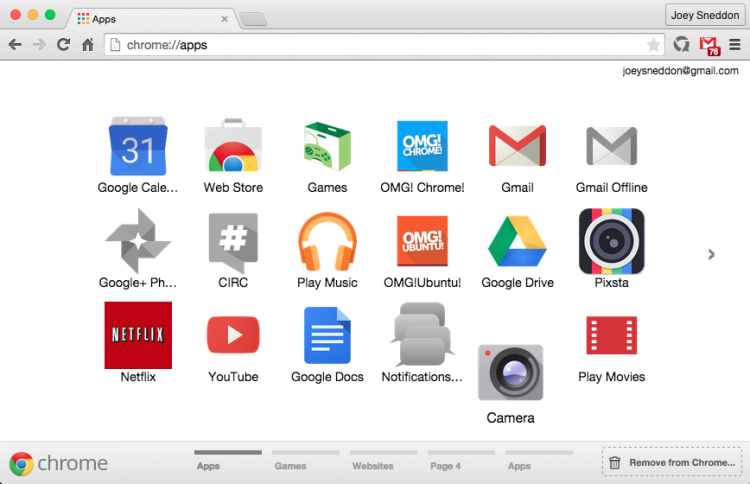
by Michael Bastin | Nov 7, 2019 | Freelance translators
What is White Hat SEO?
White Hat SEO is colloquially to refer to as safe, legit, or sustainable SEO practices, that you probably “should concentrate on”.
That’s really it! “Good SEO”.
White Hat SEO, Explained
What Google wants you to do instead is “prepare” your content in a way that helps THEM organize it better. Really, what they have done, is create this $80 billion dollar industry of people who are working for Google without Google actually paying them. Google publishes their list of guidelines of what they WANT you to do (notice I didn’t say “a list of guidelines of what will make your site rank better”, although there is some overlap) so that you will spend your time preparing (optimizing) your website so it’s easier for their web-crawler, Googlebot, to understand your site better and make their life easier. Here are some of Google resources for what you should do as an SEO (this would be the closest thing to White Hat SEO):
Okay so that’s like 200+ pages of super boring dry reading. I know you’re not here for that. #TLDR (Too Long, Didn’t Read)
The key takeaway here is that Google is not going to give out its secret formula to ranking on its search engine. That would be stupid. Instead, it’s going to publish a bunch of information (and misinformation) that is actually geared towards making the algorithm’s job much easier. So it can take information of all of our websites (me and you included) and display it to it’s users on the SERP (search engine results page). My prediction is that one day Google SERP clicks are going to go so low, because all the information a searcher needs will be displayed ON the SERP, and there will not even be a need to click through to the actual website. For example: no need to go to NFL.com anymore for the scores
So that is why “White Hat SEO” is a misnomer, just like black hat seo. We SEOs use it to say “what kind of SEO tactics and tricks can we do that Google “approves”. But really, Google just wants you organizing your site, not building “good links” and “guest posting”, etc. More on this later. White Hat SEO is: slower, but safer
White Hat SEO is the term we (not Google) give to label certain search engine optimization tactics/strategies as ‘safe’ or ‘sustainable’ for your website. Whereas Black hat seo would signify the search engine optimization tactics/strategies that are ‘risky’ for your website.
White Hat SEO Techniques & Tactics
So now that you understand what White Hat SEO is, let’s talk about some of the generally accepted white hat seo techniques, tactics, tricks & strategies that you can use in your business and feel generally safe about (there is always a risk of doing something wrong, or Google changing their mind about what they like, but you can’t live your entire life on what-ifs. Get out there and SEO a little).
Pro tip: One easy distinction to understand if what you are about to do is white hat seo vs. black hat seo, is look at how much automating & mass producing you are doing. If you are using bots, scrapers, spinners, and producing and/or sending out non-personalized information, it’s probably closer to black hat.
White Hat SEO Techniques, By Category:
- Local
- Link Building (Off-page)
- On Page
- Promotion
- Technical SEO
- Other
White Hat Local SEO Techniques
- Claim your business on Google My Business
- Claim the Foundational Citations (Yext, Facebook, Bing, Yahoo, Apple Maps, etc.)
- Fully complete (filled out with descriptions, hours, videos, images, etc.) all your listings
- Submit your business to trusted data aggregators
The foundations of establishing your business as an actual business (and not just a website) in Google’s eyes is to make sure your business is claimed & listed everywhere that Google expects a real business to be. Next, you want to make sure that your business information is listed consistently & accurately across all these online directories, so Google will trust the information is up-to-date and reliable.
Check Your Business Listing Accuracy
If you have already claimed your Google My Business listing, I highly recommend you check your business listing accuracy across the web right now.
White Hat Link Building
- Associations & Organization Links – Get listed (and linked to) at the various professional organizations, associations, institutions, etc. that you are a part of.
- Guest Posting – Find other websites in your industry and do contribute quality articles for them, so they can share more interesting information to their audience and introduce you at the same time (and link to you).
- Outreach link building – Reach out to other relevant & trusted websites in your industry and show them the valuable content you are creating so they have an opportunity to share it with their audience (and link to it).
- Social Foundations – Build & fully fill-out your social profiles (Facebook, Linkedin, Yelp, Twitter, etc.)
White Hat On Page SEO
- Content Clusters
- Create Unique & Valuable Content
- Improve Content for UX
- Informative Internal Linking
- Naming Images
- On Page SEO Optimization (all the standard best practices)
White Hat Promotional SEO Tactics
- Promote your content on social media
- Brand Building – Use PR, networking & advertising to grow your brand awareness
White Hat Technical SEO
- Alt text – Add alternative text (alt text) to images
- Breadcrumbs
- Clean / avoid thing content
- Create an XML sitemap
- Eliminate Keyword cannibalization
- Mobile optimization
- No Index Non Valuable Pages
- Page speed optimization
- Setup Google Search Console
- Schema Markup – Add structured data markup to your web pages to give Googlebot a clearer picture of what everything is.
- Website structure
Other White Hat SEO Strategies
- Analytics
- Conversion Rate Optimization
Final Thoughts
The idea of putting everything about White Hat SEO into ONE article is insanity, so we didn’t even try. This article was meant to be an introduction to what white hat SEO is, and some of the techniques & strategies that you can use to help improve your website visibility without too much risk. If you want more information, actionable strategies, or even the exact processes we use to actually implement all of these things, be sure to join our SERP University community here.
White Hat SEO by Devin Schumacher first appeared on SERP Co.

by Michael Bastin | Oct 19, 2018 | Freelance translators
You may have impressive qualifications and excellent marks for on on-the-spot translation test, but if you are applying for work at a top translation company, chances are, you will also have to pass a competency-based interview with flying colors. A competency- or skills-based interview differs vastly from standard interviews.
Rather than asking general questions such as “Why do you think you are a good communicator with foreign clients?” the questions might be, “Can you tell me about a time that you were translating for foreign clients and you were unable to translate a word or phrase?”.
Research has shown that competency-based interviews are significantly more effective at resulting in a successful hire, which is why Fortune 500 (and indeed all forward-thinking) companies are using this technique. Its aim is to elicit the extent to which the competencies of a candidate are a match for the competencies required by the target job.
Focusing your resume on your skills
One of the best ways to perform well at a competency-based interview is to be clear-headed and relaxed, knowing you are well prepared. Reduce insecurity and anxiety by providing the recruiters with a clear idea of your abilities. Draft a professional skills-based resume, being as specific as space allows. For instance, instead of saying you are responsible, mention a specific project you completed that reveals the scale and depth of your knowledge.
For instance, instead of simply listing down ‘simultaneous interpretation’ as a skill, state: “Worked as simultaneous interpreter at the recent Small Business Conference, interpreting from English to Spanish for entrepreneurs for four hours daily.” You can then draft questions around the skills you stated. The more questions you practice for, the less likely you will be taken off guard.
Preparatory steps
If the translation company you are applying to will be relying on a competency-based interview, then the job description will list key competencies or skills. For translators, these may include language and textual competence, cultural knowledge, and communication transfer competence.
A question for one of these competencies might be: “Tell me about a time that you were not able to competently transfer a message.” You can easily see how tricky this type of question can be to answer.
On the one hand, you cannot say you never experienced such an obstacle; on the other hand, you need to frame this obstacle positively, showing how you got over it and what you learned from the experience. You additionally need to state the steps you took to ensure you were able to deliver the next time you encountered a similar challenge.
Answering tough questions well
Interviewers normally recommend that interviewees try to think of three examples for each competency. When asked a competency-based question, used the SHARE model (almost identical to the STAR model) to answer it. SHARE stands for: Situation (describe the situation in which you were challenged to show your skill; Hindrance (what was the challenge you were called upon to solve?); Action (what action did you take); Result (what was the result of your decisions and actions?); and Evaluation (what did you learn from the experience?).
Interestingly, the latter (Evaluation) is actually the most important part of your answer for recruiters. What they ultimately want is an employee who can learn their values and methods; one who is positive enough to see challenges as opportunities for refining process and providing clients with better service.
Doing well at a skills-based interview involves keeping a step ahead of your interviewers, practicing potential questions. If you have a mentor or trusted colleague, discuss potential questions with them and ask them to help you out with role-playing.
Finally, remember to keep calm, and don’t be disheartened if you are asked a question you have not prepared for. Simply be honest and think back to your own genuine experiences. The latter is truly what your interviewer is interested in discovering.

by Michael Bastin | May 8, 2017 | Freelance translators
French is of course a beautiful language…if you’re fluent in it as a second language, then congratulations! You’ve worked hard to learn what is known as one of the most romantic languages in the world!
When it comes to French in the context of translation, however, you’ll quickly learn that your experience is anything but romantic. It takes time to develop a knowledge of another language at the expert level, but it’s not enough. You need to be a complete French master in order to be a translator, and you need to be aware of the harsh realities of the translation business. (more…)

by Michael Bastin | Apr 25, 2017 | Freelance translators
Any translator knows that the key to success is getting technology to work for you, not the other way around. We operate in a line of work where we have to utilize translation technology and project management software to do our jobs correctly, but technology can help us in more ways than one.
A modern convenience can be found within Chrome applications. The Google Chrome browser contains an app store that allows users to customize their Internet experience via helpful tools and widgets that add value to the browser itself.
Some tools are used for fun or entertainment value. Others can help translators like us perform better and streamline our productivity.
Grammarly
If you’re used to using a program like Microsoft Word or online typing applications like Google Docs, you may have realized long ago that they aren’t exactly grammar police. That’s a bad thing — their sensors aren’t refined enough to pick up on wrong word choices or more complicated grammar issues.
With the Grammarly app, users can upload documents for spell and grammar checking at a higher caliber. The app also shows spelling errors within most Internet pages. WordPress users can utilize Grammarly as a more complete in-page checker tool than what Chrome provides. It is available in both US and UK English.
This Chrome extension is yet another spelling and grammar checking tool much like Grammarly, though there are two key differences. First, Antidote is a premium app that requires payment for use. The features are more advanced and the extension form of this application is just one variant. Antidote can also be used in tandem with Microsoft Office and Windows.
Secondly, Antidote isn’t just an English checker tool. It’s also available in French, which can help with French translation projects.
It’s very rare that you’ll find a translation project client that will tell you “I don’t care how long it is; it’s whatever.” No. Clients are very much focused on things like page and word counts.
Word Count Tool is a quick and easy-to-use word counting tool that can also count characters. The app can also offer you important information that may help you with your work, like the number of sentences and paragraphs in a selection. Other data includes average sentence and word length.
The above lists have been very much focused on the technical aspects of translation work. Now we have an app here that is largely about aesthetics and formatting.
Listify is a free app that allows users to take raw or plain text and convert it into HTML or otherwise formatted lists. Large lists can easily be bulleted or formatted with the use of a text form and drop down options that tell Listify how to modify the text.
Finally, translators have to sift through a lot of emails every day — depending on your business size or the number of clients you take on, this number could be in the upper hundreds. Maybe even a thousand or so if you’re insane!
No matter how many emails you receive or need to send every day, Gorgias can help you speed up the progress. Through the extension, users can type up simple snippets and templates that they can use over and over again. Tired of having to type out the same project completion or job rejection email every day? Gorgias can help you out.
I’ve given you five great apps and extensions you can use with Chrome that will help you with your translation work. What other productivity apps do you use? Let me know which you find most helpful.




